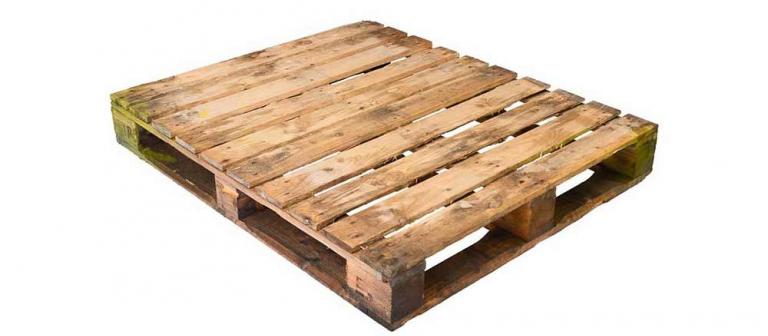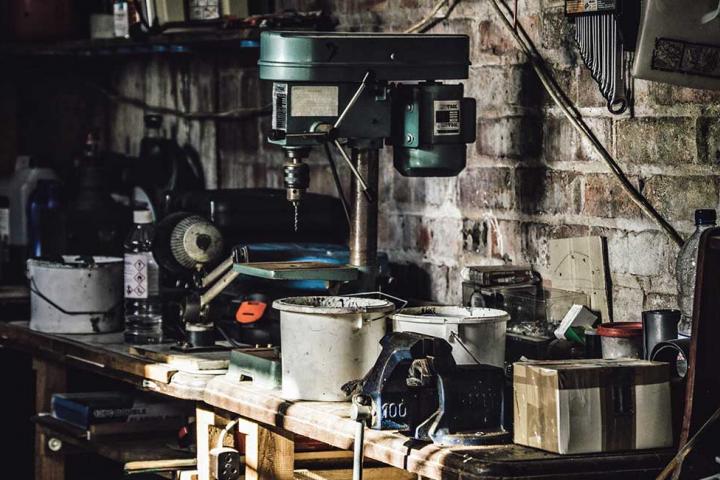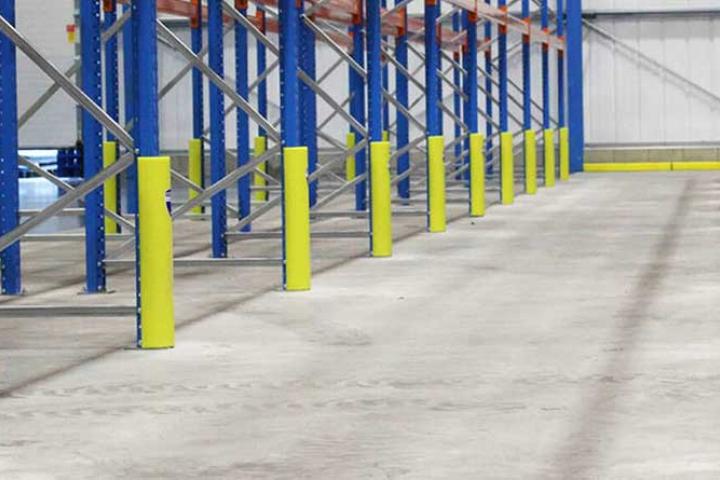Wooden Pallets for warehouse storage variants
A pallet is a structure used to support loads for storage and transportation. The traditional wooden pallet is the most widely used although different materials such as plastic, metal or recycled materials are also in wide circulation. Wooden pallets are manufactured in timber processing plants which have heat treatment and kiln drying facilities. There are millions of new pallets produced every year while the used pallet market is also massive. The range of wooden pallets available is surprising as there are many to choose from. The British standards institute has selected the following pallet dimensions for standard pallets. 800mm x 1000mm, 1000mm x 1200mm, 1200mm x 1200mm and 1200mm x 1800mm. These standard sizes take into account the majority of transport vehicles and are designed to give the best practicable loading on general-purpose vehicles.
Typically for wooden pallets, several form factors exist where each pallet type is centred around the concept of a two-way entry and four-way entry pallets. Two-way entry pallets allow entry from forklift forks from two opposite sides only whereas four-way entry allows access from all four sides. Four-way entry pallets are of particular value when the pallet is being handed from one type of lifting device to another allowing it to be accessed from all four sides.

Wooden Pallets aren't the only option.
The use of older forms of crating such as wooden boxes and the wooden barrel has been dramatically reduced. Moving goods was a very different activity before the introduction of bulk shipping methods. Products were prone to damage, theft and generally poorly managed with unreliable deliveries. Bulk shipping using the shipping container or intermodal transport has been possible since the introduction of the wooden pallet. When goods are strapped, stretch or shrink-wrapped to a pallet it produces a very stable compact unit for transportation.
There are exceptions where pallets are not suitable and this depends on the products being moved. Vehicles are an obvious example where the use of pallets is only employed for the movement of components within the manufacturing facility. Many manufacturers particularly in heavy industries would opt for the stillage type of containers. These are similar to pallets in principle but are instead an enclosed metal cage. Small items such as bracketry and levers etc can be tipped into a stillage without the addition of strapping or wrapping.
What makes wooden pallets so effective.
Not only does a palletised load utilise space extremely well but it also allows handling by way of a forklift truck. Pallets can be moved quickly and efficiently through the various phases of the supply chain with the use of forklifts. Hand-pallet trucks can be used to move pallets to different zones within a warehouse. When you consider many wooden pallets are designed to support 1000kg or more the ability for a single person to be able to move these excessive weights with ease is vital to any production or storage environment.
Wooden pallets are produced in a variety of different sizes but the lack of one international size adds substantial expense to international trade. Pallet racking for example is designed with a specific pallet in mind so if goods are received on a different pallet size this can cause issues with handling and storage. With additional investment beam levels within a racking system can be timber-decked allowing various sizes of the pallet to be stored.
Pallet Markings or stamps are largely to do with identifying what treatments each pallet has had. This is particularly important in the context of international shipping as certain treatments are banned in some countries. Pallet treatments serve two purposes, firstly they protect the wood from decay and therefore extend the pallet lifecycle. The marking also indicates how a pallet has been treated against pests and fungi. Below is a list of some of the markings you'll find and what each one means.
IPPC - Indicates that the pallet has been treated against the spread of insect or plant diseases. The treatment has met the standards of the Internation Plant Protection Convention (IPPC)
KD - Indicates moisture has been removed from the timber through a process of kiln-drying. This is particularly helpful in preventing warping as the wood dries out under different environmental conditions.
DB - Simply means the wood has been debarked. It also indicates that the timber has not been treated with chemicals.
EPAL Indicates that these pallets have not been subjected to chemical but have been heat-treated.
HT - Heat treated pest control is marked with this symbol. It means the core of the wood has been heated to a specific temperature for a specific length of time.
MB - This stands for Methyl Bromide which is a powerful pesticide. This type of treatment is banned in many countries as it has a negative impact on health and the environment.
Wooden pallets can be adapted with accessories to make them suitable for different tasks. A wooden pallet collar quickly and cost-effectively converts a wooden pallet into a stillage type of container. A collar can be folded flat when not in use but effectively turns the pallet into a box that creates a four-sided structure. It can be quickly attached when needed making them even more versatile. They can have lids or dividers and can be branded with your company logo.
Economical solution.
Contractual agreements usually define how pallets are purchased and used. The supplier of the pallets also offers buyback schemes or services were surpluses or unused pallets can be uplifted and returned to the manufacturing plant. This ensures that the cost for using pallets is reduced and the quality supplied is of a high standard. Damaged pallets are either repaired or shredded for biomass material.
Without doubt one of the best ways to make economical use of the palletised load is with an investment in a pallet racking system. Pallet racking is specifically designed for the storage of palletised goods. With the use of a forklift, pallets are stored in vertical racks accessible from aisles and lanes. Each pallet is placed within a racking bay supported on a beam level. The depth of each bay is specifically designed for a certain pallet depth. Pallet racking is basically a giant shelving system configured for forklift truck access.
Storing pallets in racking.
Narrow aisle systems use a dedicated narrow aisle forklift truck which operates within the racking aisles only. These trucks are very large machines and to increase efficiency they do not leave the aisle during operation. At the end of a narrow aisle racking run, there is what is known as a P&D station or Pick and Deposit Station. P&D stations are an extremely active area so the racking system would be protected with barriers or column protectors. When a pallet is deposited within this area its orientation must be such that the narrow aisle forklift can access it from the side. A two-way pallet would make this impossible a pallet for this application must be handled both from its front and its side. The two main types of pallet also come in a few different flavours, they can be single decked, reversible, winged, close-boarded or open-boarded to name a few.
Approximately 85% of all wooden pallets in the UK measure 1219mm x 1016mm (48 x 40 in) generally with the forks entering the 1200mm side. When storing pallets in a racking system care must be taken when designing the bay width and depth. If for example a pallet measuring 1200 x 1000mm was to be stored in a racking system then generally the 1200mm side would be to the front of the racking with the 1000mm depth orientated into the racking system. For this reason, a 900mm deep frame would be used in the racking system which allows for a 50mm overhang making pallet positioning easier. If the racking was also 1000mm deep then positioning the pallets perfectly inline with the front of the racking would be time-consuming with a risk of improper placement. The beams on which the wooden pallets sit are generally only 50mm thick so the correct positioning is vital.
Manufacturing process and treatment.
Wooden pallets have to be extremely robust and last as long as possible. The timber used for wooden pallets needs to be responsibly sourced, processed correctly and ideally protected against decay. Timber processing plants need a range of treatments to help prolong the lifespan of each wooden pallet. Heat treatments, dipping and high-pressure preservatives are all techniques used in the treatment process. This helps the timber preserve its natural appearance and commercial value while significantly extending its service life. The treatments used need to be effective and environmentally safe.
In order to produce wooden pallets, the timber goes through a series of processors. Once the trees are felled they are collected from an easily accessible roadside point by a forwarding machine, picture a tractor and trailer with a grabber type arm at the rear. The logs are then transported by road to one of many strategically placed sawmills in quantities of thousands per day. Once they arrive at the sawmills each log is sorted based on size and sent to the primary processing zone where they are cut into sections for construction, fencing and pallet production. The cut timber is then scanned or inspected for defects then graded to ensure only the highest quality timber is used. The timber goes through more visual inspections ready for the next stage of kiln drying. Giant ovens are used for the drying process, this removes the moisture this takes place very slowly to prevent warping and distortion. The final treatments are then applied which help fight off insect attacks and decay.
Wooden Pallet Repatriation.
Sustainable timber supply has now become an essential part of the manufacture of wooden pallets. Ideally, most of the timber should be supplied FSC certified. The FSC are a non-profit organisation dedicated to the promotion of responsible forest management worldwide. Many timber processing plants ensure that the raw materials they use for wooden pallets are independently verified by the Soil Association. This charity operates across a spectrum of health and environmental issues including the sustainable use of land.
Pallet when not in use take up valuable ground space they can look unsightly, are a health and safety hazard and can also have a negative impact on the surrounding environment. Many organisations arrange to have surplus pallets uplifted so they can be taken to a pallet service centre. They will be inspected, repaired or recycled to biomass if they are beyond repair so nothing goes to waste.







